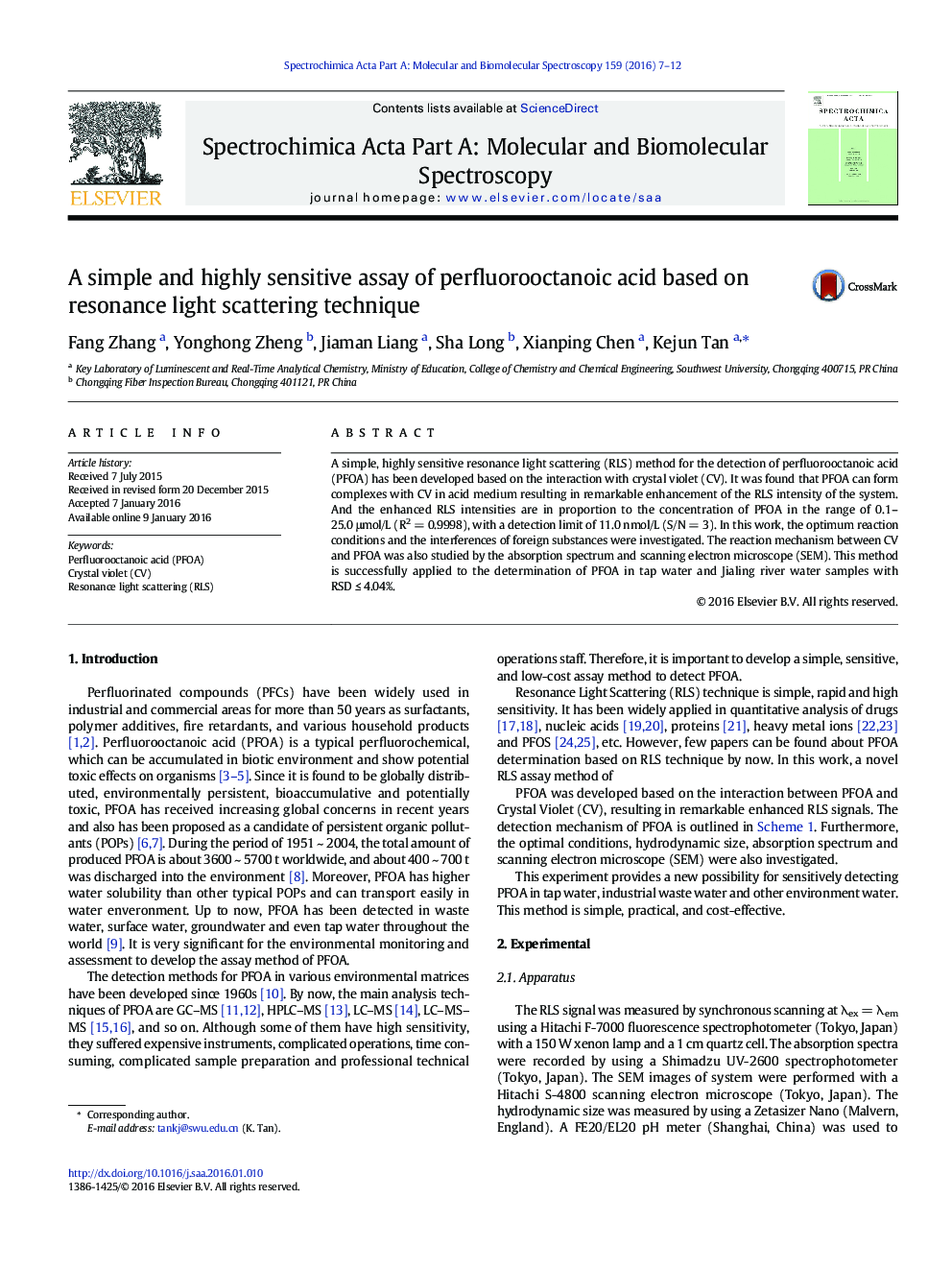| Article ID | Journal | Published Year | Pages | File Type |
|---|---|---|---|---|
| 1228910 | Spectrochimica Acta Part A: Molecular and Biomolecular Spectroscopy | 2016 | 6 Pages |
•A simple and rapid RLS method for the determination of PFOA has been developed.•The method is highly sensitive and the limit of detection is nanomole level.•The method is rapid, simple and cost-effective.•The interferences of SDS and SDBS were eliminated successfully by Ba2 + treatment.
A simple, highly sensitive resonance light scattering (RLS) method for the detection of perfluorooctanoic acid (PFOA) has been developed based on the interaction with crystal violet (CV). It was found that PFOA can form complexes with CV in acid medium resulting in remarkable enhancement of the RLS intensity of the system. And the enhanced RLS intensities are in proportion to the concentration of PFOA in the range of 0.1–25.0 μmol/L (R2 = 0.9998), with a detection limit of 11.0 nmol/L (S/N = 3). In this work, the optimum reaction conditions and the interferences of foreign substances were investigated. The reaction mechanism between CV and PFOA was also studied by the absorption spectrum and scanning electron microscope (SEM). This method is successfully applied to the determination of PFOA in tap water and Jialing river water samples with RSD ≤ 4.04%.
Graphical abstractThe system exhibits weak RLS peaks in the absence of PFOA, but when PFOA existed in the solution, obvious enhanced RLS peaks are observed due to the interaction between crystal violet (CV) and PFOA. Thus, a rapid and simple RLS method for sensitive detection of PFOA has been developed.Figure optionsDownload full-size imageDownload as PowerPoint slide
